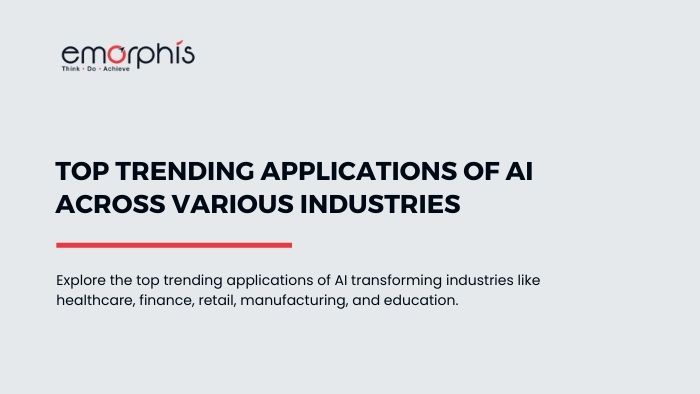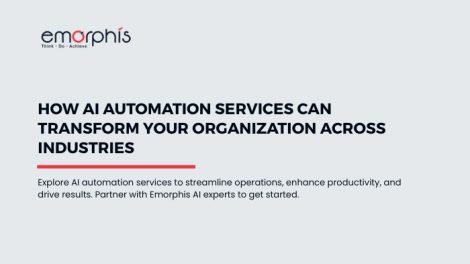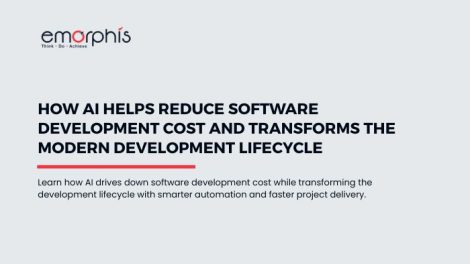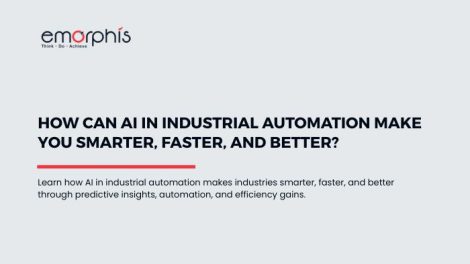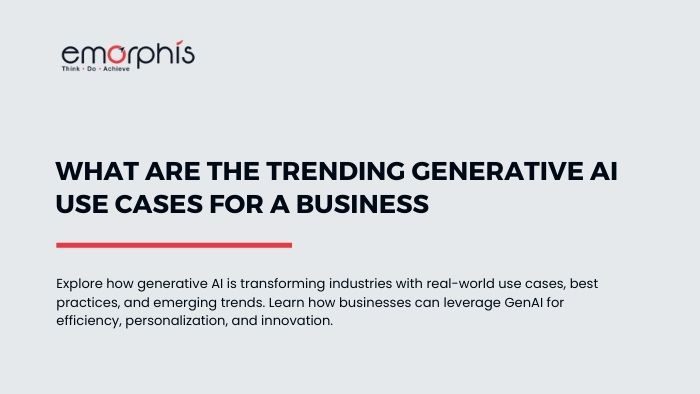AI Is Everywhere… No, Seriously!
Remember when AI was just a sci-fi dream, making cameos in futuristic movies? Well, it’s 2025, and AI is no longer just a cool tech buzzword—it’s the boss of nearly every industry. Whether it’s diagnosing diseases, predicting what you’ll binge-watch next, or even writing articles (oh wait… am I AI? ), the applications of AI have skyrocketed.
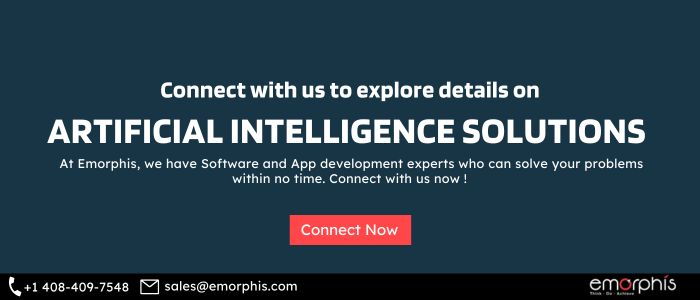
From healthcare to finance, retail, manufacturing to education, AI is running the show. But where exactly is it making the biggest impact? Let’s break it down, industry by industry, application by application, and see how AI is revolutionizing the world around us.
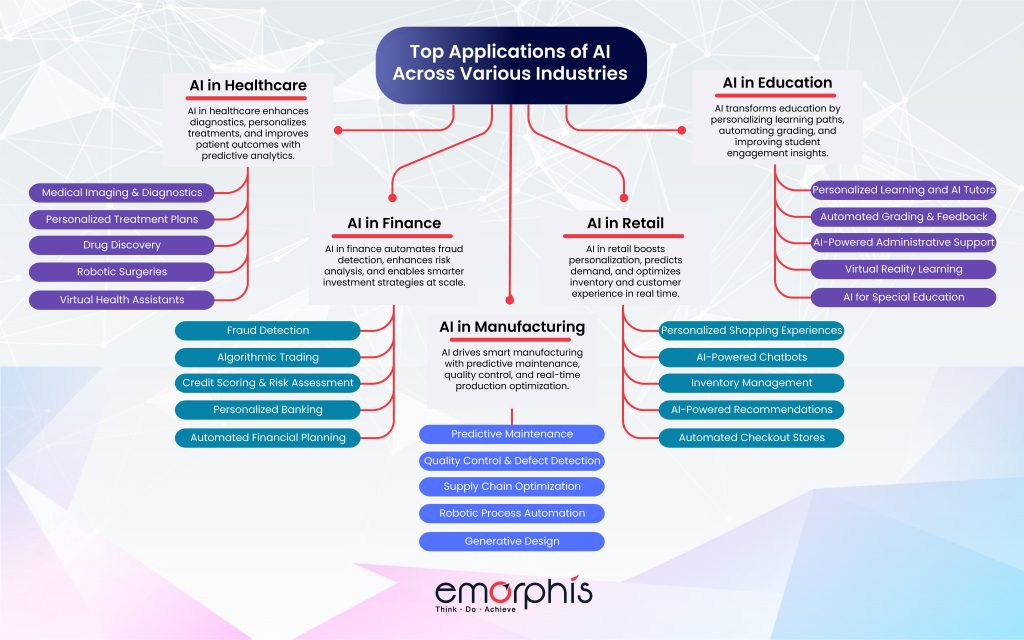
1. AI in Healthcare
Healthcare has embraced AI like a long-lost soulmate, transforming patient care, diagnostics, and management.
1.1. Medical Imaging & Diagnostics
AI-powered tools like IBM Watson and Google’s DeepMind can detect diseases such as cancer with higher accuracy than humans. These AI models analyze thousands of medical images, learning patterns, and anomalies that even trained specialists might miss. This helps in early detection, which is crucial for diseases like cancer, where early intervention can significantly improve survival rates. AI also reduces the chances of human error, leading to better patient outcomes. Moreover, AI-assisted radiology reports can be generated faster, allowing doctors to focus on treatment rather than administrative work.
1.2. Personalized Treatment Plans
AI-driven predictive analytics tailor treatments to individual patients, improving outcomes. By analyzing a patient’s genetic profile, lifestyle, and medical history, AI can suggest the most effective treatment plans. This is particularly helpful in oncology, where AI can recommend personalized chemotherapy regimens based on a patient’s specific cancer type. Additionally, AI helps in predicting how a patient will respond to a particular drug, reducing the risk of adverse reactions. This technology is making precision medicine a reality, ensuring that treatments are not just generalized but highly specific to the patient’s needs.
Find more details of healthcare software development services.
1.3. Drug Discovery
AI accelerates drug development by analyzing complex datasets, reducing time and cost. Traditional drug discovery can take over a decade and cost billions, but AI is speeding up the process by sifting through vast biochemical databases. It identifies potential drug candidates by predicting how different compounds interact with human cells. This has already led to the discovery of new antibiotics and treatments for diseases like Alzheimer’s. Pharmaceutical companies are now heavily investing in AI to make the drug discovery process faster and more efficient.
Explore details on an AI software development company
1.4. Robotic Surgeries
AI-assisted robots perform minimally invasive procedures with pinpoint accuracy. These robotic systems, like the da Vinci Surgical System, use AI to assist surgeons in performing complex procedures with enhanced precision. The AI ensures steady hand movements, reducing the risk of tremors. Additionally, AI can provide real-time feedback, highlighting critical areas and improving surgical outcomes. Patients also benefit from faster recovery times and reduced chances of complications due to the precision of AI-assisted surgeries.
1.5. Virtual Health Assistants
Chatbots and AI-driven assistants help patients schedule appointments and get medical advice. These AI-powered tools can provide 24/7 support, answering patient queries about symptoms, medications, and treatment options. They reduce the burden on healthcare staff by handling routine inquiries, allowing medical professionals to focus on critical cases. AI assistants can also remind patients to take their medications and follow post-treatment care plans. Additionally, they integrate with telemedicine platforms, ensuring that patients can consult doctors remotely with ease.
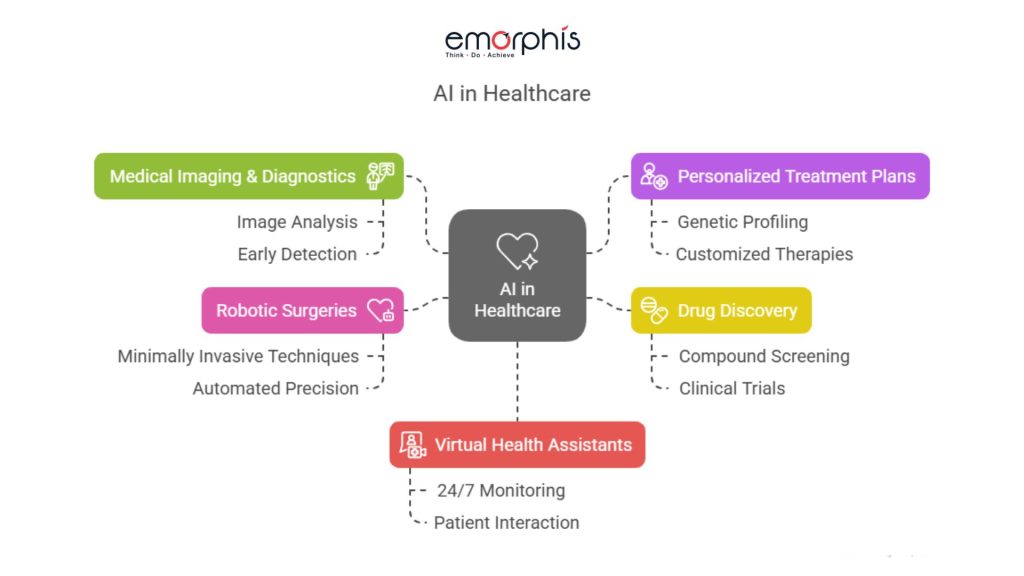
Click the link to explore details on – AI in healthcare
2. AI in Finance
The finance industry thrives on numbers, and AI is crunching them faster than ever.
2.1. Fraud Detection
AI algorithms analyze transaction patterns to flag fraudulent activities in real-time. By using machine learning, AI can detect unusual transaction behaviors that deviate from a user’s typical spending habits. It identifies fraudulent activities like credit card fraud, identity theft, and money laundering by analyzing transaction locations, amounts, and times. AI-powered fraud detection systems adapt over time, learning new fraud tactics and improving accuracy. This has led to significant reductions in financial crime, saving banks and customers billions.
2.2. Algorithmic Trading
AI-driven trading bots make split-second investment decisions to maximize profits. These AI models analyze market trends, historical data, and real-time news to predict stock movements. By making trades in milliseconds, AI-driven trading systems can capitalize on opportunities that human traders might miss. Many hedge funds and financial institutions rely on AI for high-frequency trading, improving their portfolio performance. Additionally, AI helps in reducing emotional biases in trading, ensuring more data-driven investment decisions.
2.3. Credit Scoring & Risk Assessment
AI evaluates creditworthiness with greater accuracy than traditional methods. Instead of relying solely on credit history, AI considers additional factors like income patterns, spending behavior, and even social media activity to determine credit risk. This allows banks to offer loans to individuals who might have been overlooked by traditional credit scoring models. AI-driven risk assessment tools also help businesses evaluate potential investments by analyzing financial health indicators. This leads to more inclusive financial services and better decision-making for lenders.
Follow the link to learn more about Fintech App Development services.
2.4. Personalized Banking
AI chatbots like Erica (Bank of America) and Cleo assist customers 24/7. These AI-powered assistants help customers check their balances, make transactions, and even provide financial advice. AI chatbots improve customer service by reducing wait times and offering instant responses. Additionally, AI-driven banking apps analyze user spending habits and suggest budgeting tips. Personalized banking experiences enhance customer engagement and satisfaction.
2.5. Automated Financial Planning
AI-powered robo-advisors offer investment strategies tailored to user profiles. These AI systems analyze market conditions and personal financial goals to provide tailored investment advice. Unlike traditional financial advisors, AI robo-advisors are available 24/7 and often come with lower fees. They help users diversify their investments and minimize risks. Additionally, AI-driven portfolio management ensures that investments are regularly rebalanced to align with changing market conditions.
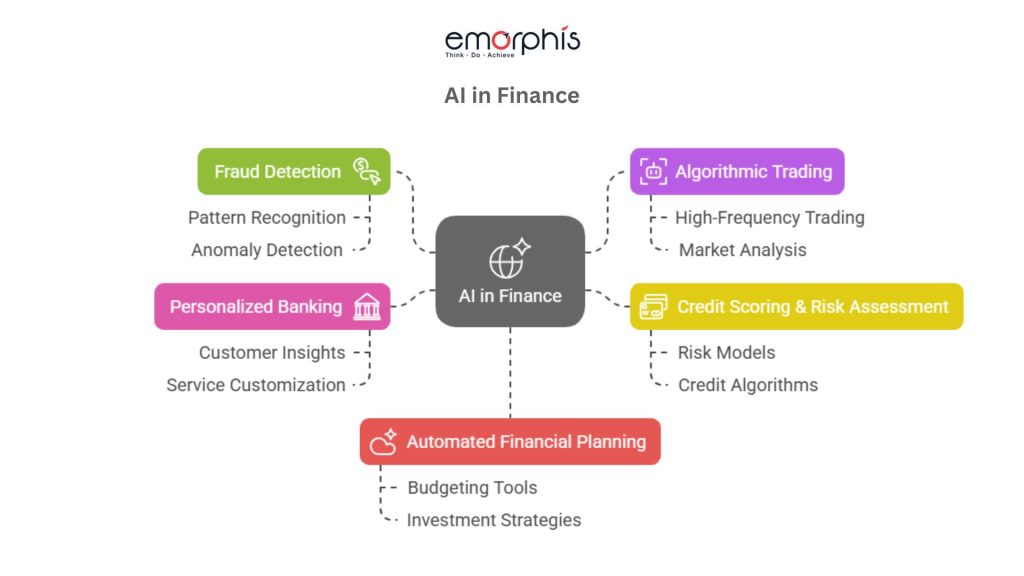
Explore details on AI in Fintech
3. AI in Manufacturing
Manufacturing has entered the AI-powered era, where machines don’t just work—they think.
3.1. Predictive Maintenance
AI detects early signs of equipment failure, preventing costly breakdowns. AI sensors collect data on machine performance and analyze it in real-time. This allows manufacturers to schedule maintenance before a machine breaks down, reducing downtime. Predictive maintenance also extends the lifespan of equipment by identifying issues early. Companies using AI-driven maintenance strategies save millions annually in repair costs.
3.2. Quality Control & Defect Detection
AI-powered vision systems inspect products for defects with unparalleled accuracy. Cameras and sensors, combined with AI algorithms, scan products on assembly lines, detecting defects instantly. This reduces waste, enhances quality, and ensures customer satisfaction. AI-powered quality control systems are particularly useful in industries like electronics and automotive, where precision is crucial.
3.3. Supply Chain Optimization
AI predicts demand, optimizes inventory, and reduces logistics costs. By analyzing historical data and market trends, AI helps manufacturers maintain optimal inventory levels. AI-driven logistics platforms also streamline shipping routes, reducing fuel consumption and delivery times. This ensures products reach customers faster and at lower costs.
Learn details on Industrial software development and solutions
3.4. Robotic Process Automation (RPA)
AI-driven robots handle repetitive tasks, boosting efficiency. AI-powered robotic arms perform assembly line tasks with greater precision than humans. This speeds up production while maintaining high quality. AI automation also allows human workers to focus on more complex tasks, improving overall productivity.
3.5. Generative Design
AI algorithms create innovative product designs based on constraints and specifications. Engineers input design parameters, and AI suggests multiple optimized designs. This accelerates product development and improves functionality. Companies like Airbus and General Motors use AI-driven generative design to develop lightweight, durable components.
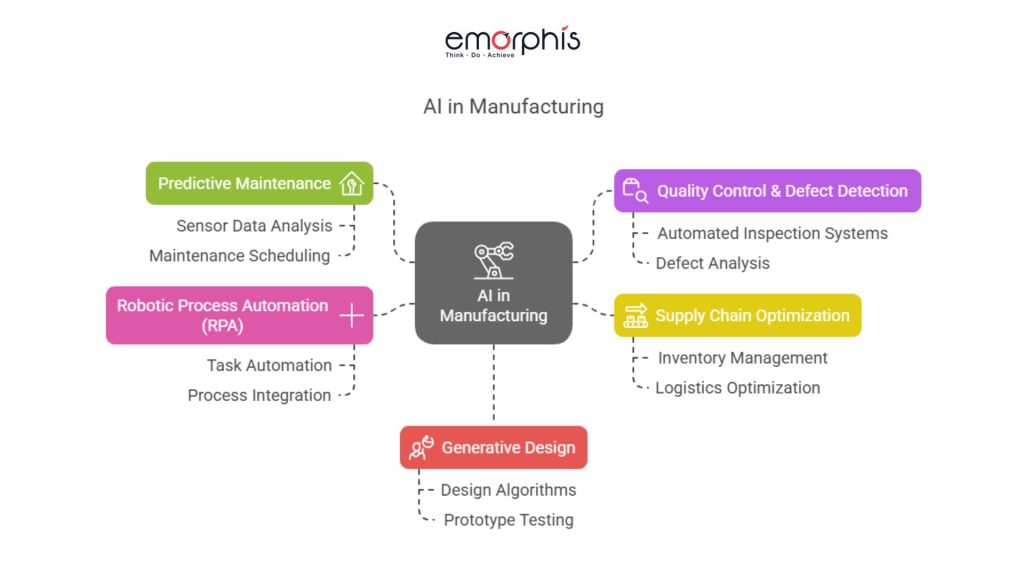
4. AI in Retail
Retail has become smarter, more efficient, and incredibly personalized thanks to AI.
4.1. Personalized Shopping Experiences
AI analyzes customer behavior and preferences to offer tailored product recommendations. Platforms like Amazon and Netflix use AI to suggest items based on browsing history, previous purchases, and even real-time trends. This leads to increased sales and customer satisfaction.
Explore case study in Predictive AI
4.2. AI-Powered Chatbots
Virtual shopping assistants handle customer inquiries, provide recommendations, and improve user experience. AI chatbots can assist shoppers 24/7, answering product-related questions and even helping with returns or order tracking.
4.3. Inventory Management & Demand Forecasting
AI predicts which products will sell and when, optimizing stock levels. By analyzing past sales data, seasonal trends, and market conditions, AI helps retailers reduce overstocking and understocking issues.
4.4. Visual Search & AI-Powered Recommendations
Customers can now search for products using images rather than keywords. AI recognizes patterns and suggests similar or complementary products, improving user experience.
Click the link to get into the details of retail software development services.
4.5. Automated Checkout & Smart Stores
AI-powered checkout systems eliminate long queues by automatically detecting and billing items as customers leave the store, as seen in Amazon Go stores.
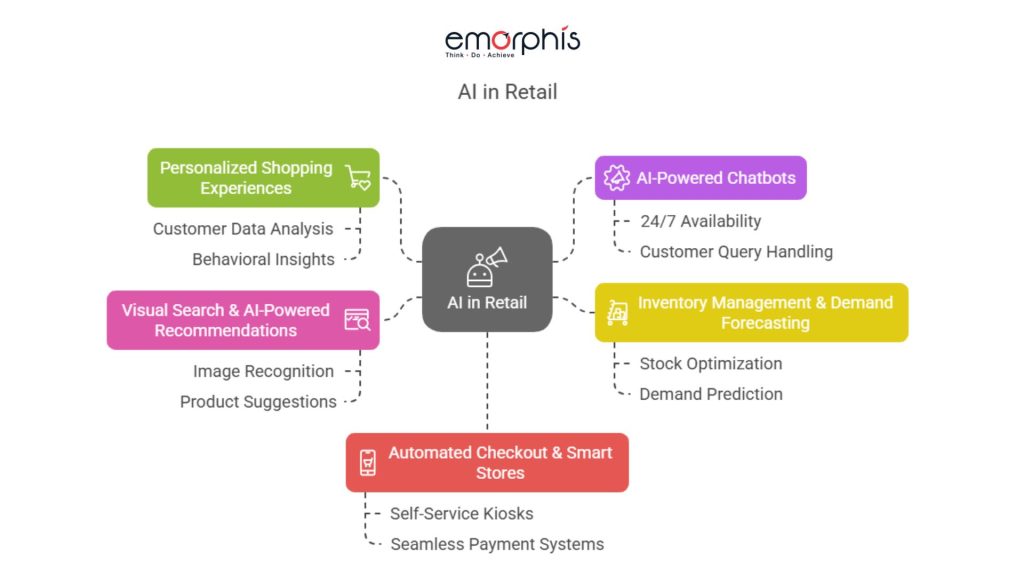
Explore more details in Artificial intelligence in eCommerce
5. AI in Education
Education has gone digital, and AI is making learning smarter, more interactive, and personalized like never before.
5.1. Personalized Learning and AI Tutors
AI-powered platforms adapt to students’ learning styles and pace. Tools like Carnegie Learning and Squirrel AI analyze students’ performance and tailor lesson plans accordingly. Whether a student excels in math but struggles in reading, AI adjusts the content to focus more on their weak areas while keeping them engaged. This ensures that no student is left behind and that education is customized to individual needs.
5.2. Automated Grading & Feedback
AI speeds up grading by evaluating essays, multiple-choice questions, and even subjective answers. Platforms like Gradescope use machine learning to assess answers with precision, reducing teachers’ workload. AI can also provide instant feedback to students, helping them understand their mistakes and improve faster. This allows educators to spend more time mentoring students rather than being buried under piles of test papers.
Find details on software product development services.
5.3. AI-Powered Administrative Support
Schools and universities use AI to streamline administrative tasks. AI-driven chatbots assist students with queries about courses, deadlines, and schedules. AI also automates paperwork, staff management, and student admissions, ensuring smoother operations. This frees up time for educators and administrators to focus on teaching and student engagement rather than clerical tasks.

5.4. Smart Classrooms & Virtual Reality Learning
AI integrates with VR and AR to create immersive learning experiences. Imagine a history lesson where students can virtually walk through ancient Rome or a biology class where they explore the human body in 3D. AI-powered smart boards and virtual assistants make classrooms more engaging and interactive, leading to better knowledge retention among students.
Explore details on the Impact of AI Technology Trends in 2025
5.5. AI for Special Education
AI tools assist students with disabilities by offering speech-to-text, text-to-speech, and other accessibility features. For instance, AI-driven hearing aids help students with hearing impairments by converting spoken words into text in real time. Similarly, AI can generate personalized lesson plans for children with learning disabilities, making education more inclusive and effective for all.

Conclusion
AI is no longer just a futuristic concept—it’s a game-changer across industries. From healthcare to finance, manufacturing to retail, AI-driven solutions are enhancing efficiency, reducing costs, and personalizing user experiences like never before. Businesses that embrace AI are not just staying ahead of the curve; they are redefining the future of their industries.
As AI continues to evolve, its integration will become even more seamless, making processes smarter, faster, and more intuitive. The question is no longer whether AI will transform industries, but how quickly organizations can adapt and innovate with it.
Find more details on AI software development company
AI is revolutionizing industries, and your business shouldn’t be left behind. Whether you’re looking to enhance customer experiences, optimize operations, or leverage AI for data-driven decision-making, we can help. At Emorphis Technologies, we specialize in cutting-edge AI software development, offering tailored solutions that align with your business goals. From AI-powered chatbots to advanced machine learning models, our team ensures seamless AI integration for maximum impact.
Get in touch with us today to explore how AI can accelerate your digital transformation journey!



